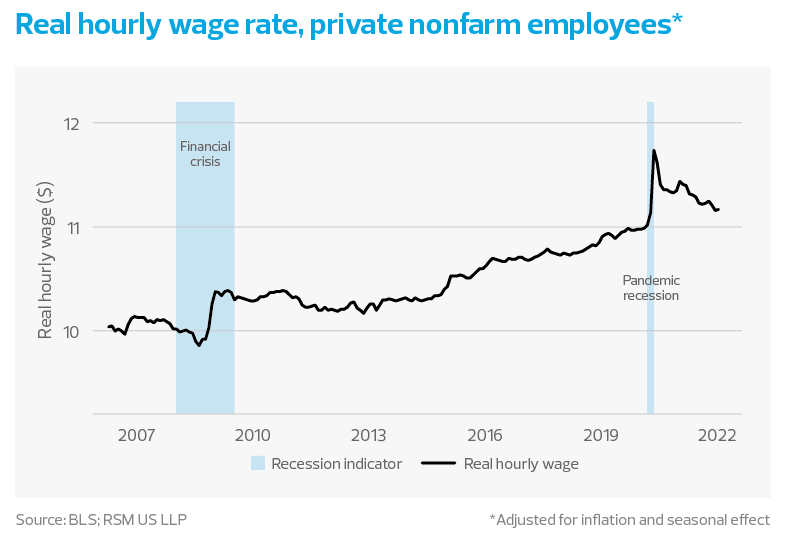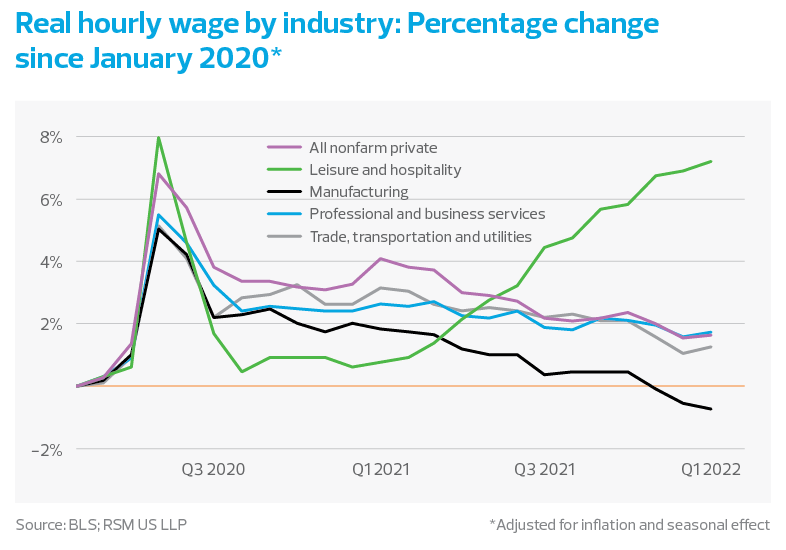Even as prices have soared in recent months, American workers are earning more than they did before the pandemic as the overall gains in their wages have outpaced inflation over the past two years.
The real average hourly wage rate in December—which is adjusted for inflation and is an indicator for purchasing power—was 2% above the pre-pandemic level, according to the most recent data from the Bureau of Labor Statistics.
As the economy rebounds from a once-in-a-lifetime crisis, robust demand—induced by aggressive fiscal and monetary policies—has driven the rapid recovery of the labor market, which recorded the strongest year of job creation on record in 2021.
To put the recovery of the labor market in perspective, consider it took about eight and a half years following the financial crisis for the unemployment rate to decline to 3.9%, while it took less than two years following the shock of the pandemic.
And there are signs that workers will continue to benefit from the growing economy. The labor market is near full employment and the quit rate is at a record high—the perfect recipe for wage gains to remain strong.
To be sure, the impact of the omicron variant remains an open question, and it is only beginning to show up in the labor market. But if anything, its spread is likely to reinforce trends that are already in place.
We expect real wages to rise even higher this year as inflation will most likely ease in the second half of the year and companies plan for the biggest pay jump in a decade, according to The Conference Board. At the same time, workers in 21 states will have a raise in their minimum wage.



